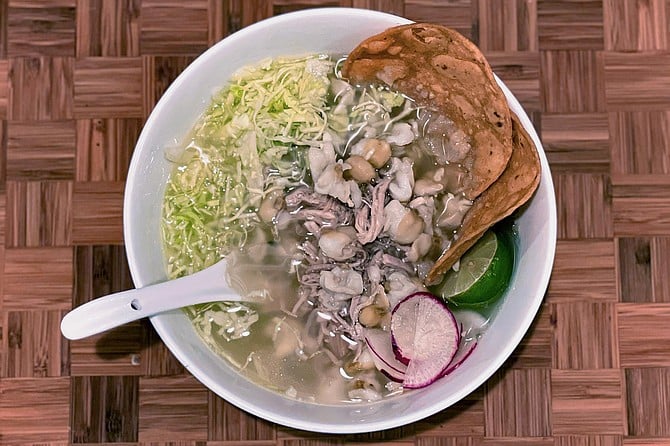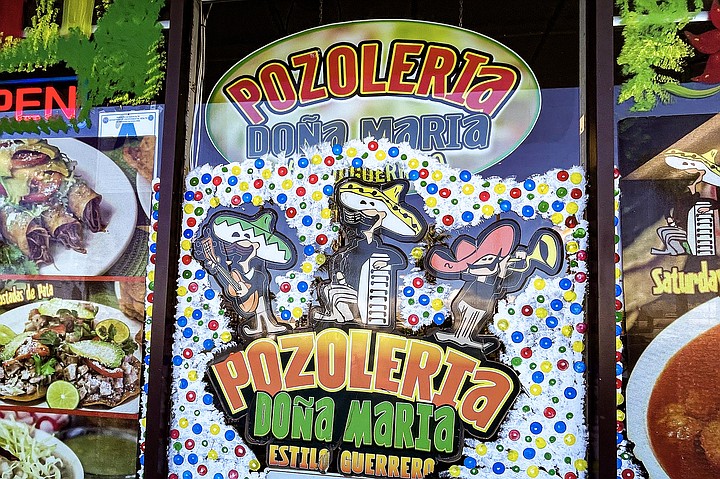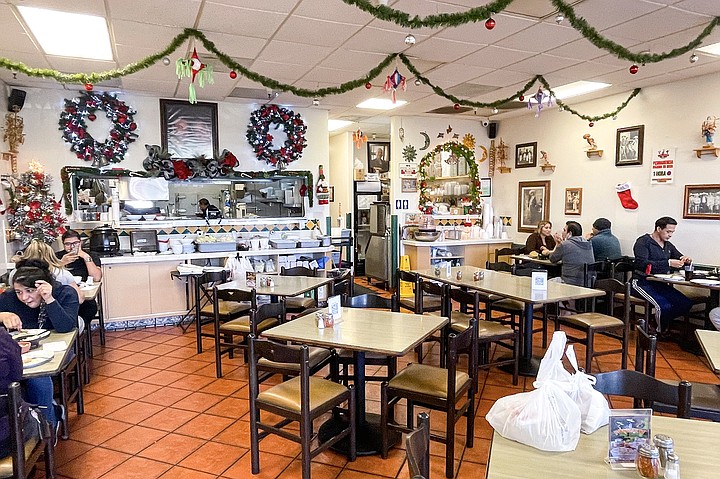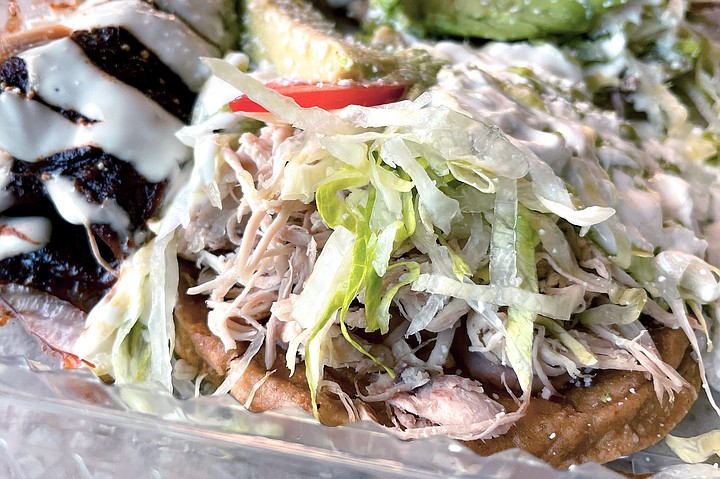 Facebook
Facebook
 X
X
 Instagram
Instagram
 TikTok
TikTok
 Youtube
Youtube

Not that I need encouragement, but the late year rain and chill reminded me that New Year’s is the traditional time of year to feast on pozole. Which meant the thing to do was aim my car south, toward Pozoleria Doña Maria.
Tijuana enthusiasts may be familiar with the popular Zona Centro hominy soup destination, but this year I went for its sister restaurant, on Broadway in the southwest corner of Chula Vista. On both sides of the border, Doña Maria specializes in the Guerrero-style of blanco (white) pozole, which means its stock isn’t flavored with either the green or red chili peppers of the verde and rojo styles. Rather than spice, it leans on the milky, white savor of pork broth to get the job done.

The job, of course, being to deliver warmth and comfort from the inside, out (though I did wind up adding salsa to spice things up). Given that, this year, once again, the notion of comfort may include ordering to-go, I was heartened to find that this pozeleria has put some effort into streamlining its take-out operation. Customers continued to fill around the edges of its half-capacity dining room, while the center of the restaurant remains open to facilitate bagged and sealed tubs of hot soup funneling out the door.

Doña Maria offers two pozole options, each named for the meat mixed in with the kernels of hominy. I continue to tell myself that, one of these days, I’m going to be a bolder food writer and try the pozole surtido, which would mean enjoying my soup with “mixed meats” including the pig’s cheek, jowl, and tongue. However, once again, mine was a large order of the de maciza pozole ($12.49), where maciza refers to pork cuts that are substantial and shreddable (think leg or shoulder).
Though I balked at what I am certain are delicious pork parts, I did venture past the pozole menu this visit, which forced me to realize that this place I think of as a soup restaurant actually does things well across the board. For about 12 bucks apiece, the place offers combination plates, each featuring an array of antojitos: enchilada, tostada, sope, and a corn tortilla beef flauta.

One key difference between the two combos is what tops each chicken enchilada: combinado number one gets covered in green sauce, while number two features black mole. I’m always game to sample a black mole (I’d label this one just above average). But perhaps more interesting is the other major difference.
One of the restaurant’s specialties is tostada de pata, one of those dishes which sounds better in Spanish than its English translation: tostada of pickled pig’s feet.
In this case, I was ready to dive in and try a pork preparation that’s been, let us say, largely unembraced by the mainstream American palate. But in my combination, the pigs feet were replaced with shredded pork. Most likely the restaurant ran out of pig’s feet, but I like to imagine the person who took my phone order heard what is arguably the most gringo name of all time, and took it upon himself to spare me the pickled trotter. I might try again around some other holiday, but for now I can’t complain: that plate of antojitos proved an excellent lunch to finish the year on.


Not that I need encouragement, but the late year rain and chill reminded me that New Year’s is the traditional time of year to feast on pozole. Which meant the thing to do was aim my car south, toward Pozoleria Doña Maria.
Tijuana enthusiasts may be familiar with the popular Zona Centro hominy soup destination, but this year I went for its sister restaurant, on Broadway in the southwest corner of Chula Vista. On both sides of the border, Doña Maria specializes in the Guerrero-style of blanco (white) pozole, which means its stock isn’t flavored with either the green or red chili peppers of the verde and rojo styles. Rather than spice, it leans on the milky, white savor of pork broth to get the job done.

The job, of course, being to deliver warmth and comfort from the inside, out (though I did wind up adding salsa to spice things up). Given that, this year, once again, the notion of comfort may include ordering to-go, I was heartened to find that this pozeleria has put some effort into streamlining its take-out operation. Customers continued to fill around the edges of its half-capacity dining room, while the center of the restaurant remains open to facilitate bagged and sealed tubs of hot soup funneling out the door.

Doña Maria offers two pozole options, each named for the meat mixed in with the kernels of hominy. I continue to tell myself that, one of these days, I’m going to be a bolder food writer and try the pozole surtido, which would mean enjoying my soup with “mixed meats” including the pig’s cheek, jowl, and tongue. However, once again, mine was a large order of the de maciza pozole ($12.49), where maciza refers to pork cuts that are substantial and shreddable (think leg or shoulder).
Though I balked at what I am certain are delicious pork parts, I did venture past the pozole menu this visit, which forced me to realize that this place I think of as a soup restaurant actually does things well across the board. For about 12 bucks apiece, the place offers combination plates, each featuring an array of antojitos: enchilada, tostada, sope, and a corn tortilla beef flauta.

One key difference between the two combos is what tops each chicken enchilada: combinado number one gets covered in green sauce, while number two features black mole. I’m always game to sample a black mole (I’d label this one just above average). But perhaps more interesting is the other major difference.
One of the restaurant’s specialties is tostada de pata, one of those dishes which sounds better in Spanish than its English translation: tostada of pickled pig’s feet.
In this case, I was ready to dive in and try a pork preparation that’s been, let us say, largely unembraced by the mainstream American palate. But in my combination, the pigs feet were replaced with shredded pork. Most likely the restaurant ran out of pig’s feet, but I like to imagine the person who took my phone order heard what is arguably the most gringo name of all time, and took it upon himself to spare me the pickled trotter. I might try again around some other holiday, but for now I can’t complain: that plate of antojitos proved an excellent lunch to finish the year on.
Comments